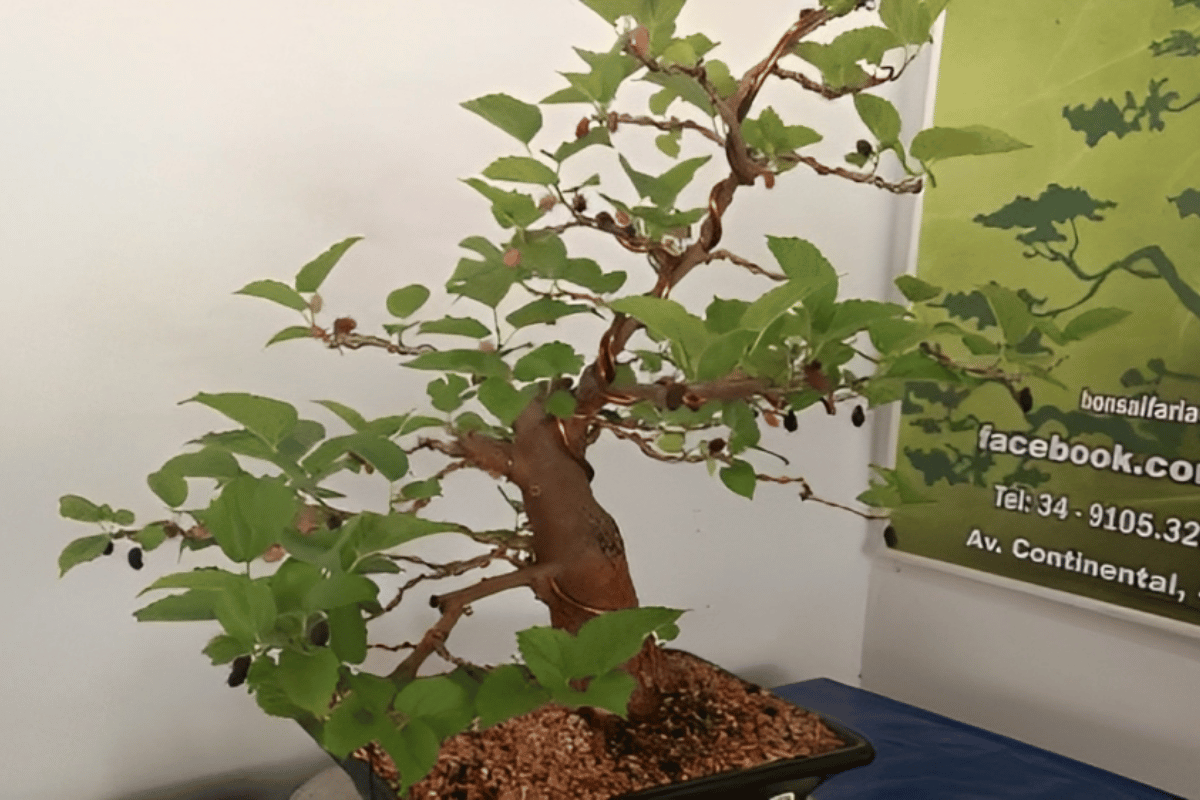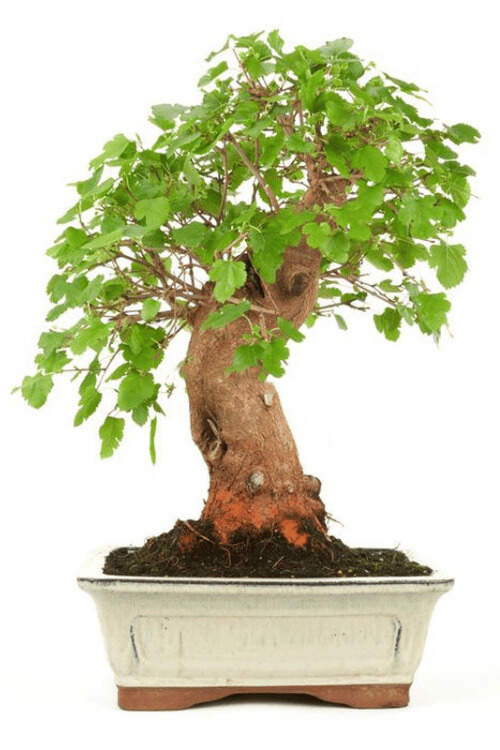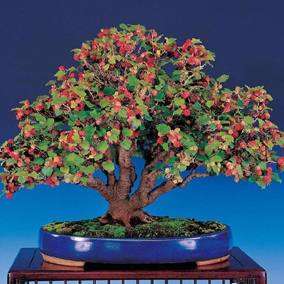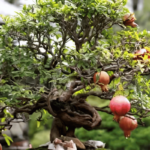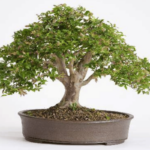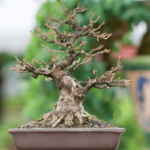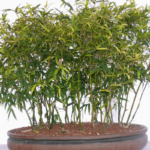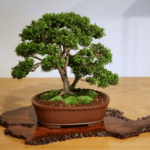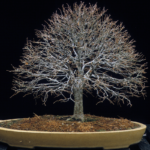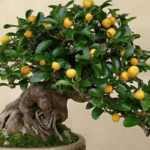The mulberry bonsai is created from the Morus Nigra tree.
This is a plant native to warmer regions, especially found in the following locations:
- Asia
- North America
- Africa
Naturally, these plants can grow to heights of 4 to 12 meters.
In fact, in tropical regions, they thrive very well and are easily cultivated.
Keep reading to discover more about this bonsai.
Characteristics
The mulberry is a fast-growing tree that can live up to 500 years.
Its trunks are rough and its leaves are heart-shaped, which in some countries are used as animal feed.
Its flowers appear in late winter with a white-yellowish color.
Its fruits are rich in vitamin C and are excellent options for producing various beverages or desserts.
Below, we’ll delve deeper into the cultivation of the Morus nigra bonsai.
How to Care for the Mulberry Bonsai (Morus Nigra)
Caring for the Morus nigra bonsai is straightforward, especially if you live in tropical regions.
Even if you live in other regions, it’s still possible to have this bonsai in your collection, as long as you provide the care it requires.
Below, you will learn the 7 steps you need to take to keep your mulberry bonsai healthy and fruit-bearing.
- Placement
- Lighting
- Temperature
- Watering
- Fertilization
- Transplanting
- Pruning
Placement
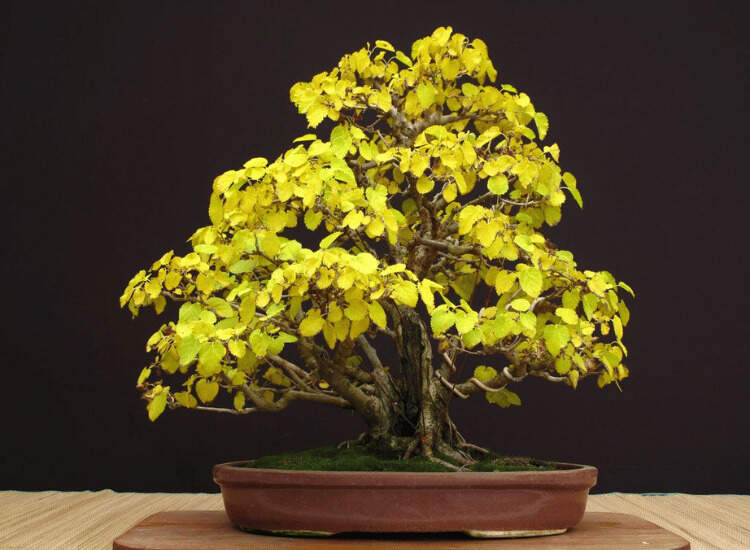
The mulberry bonsai should be grown outdoors, preferably all year round.
This plant is highly resistant to both high and low temperatures, so it’s usually not necessary to bring it indoors or into greenhouses during winter.
The only exception is during extreme weather conditions:
- Frost
- Heavy rain
The chosen spot for your mulberry bonsai should receive a good amount of sunlight, especially during the early morning and late afternoon hours.
Sun exposure is crucial for this plant, especially when grown as a bonsai, as lack of light leads to larger leaves, which affects the bonsai’s appearance.
Once you’ve decided on a location for your mulberry bonsai, avoid changing its position frequently.
Also read:
- Pomegranate Bonsai – How to Care for it in 6 Simple Steps
- Buxus Bonsai (Boxwood) – Step-by-Step Care Guide
- Lemon Bonsai – Discover How to Easily Grow Them
Lighting Care
As mentioned before, this plant should be exposed to sunlight throughout the year, receiving sunlight in the early morning and late afternoon.
Avoiding the hottest hours is important.f your Morus nigra bonsai is getting inadequate sunlight, you’ll notice:
- Larger leaves
- Abundant shoots
If you’re cultivating it indoors, artificial lighting might be necessary.
Ideal Temperature
The mulberry is highly resilient to temperature variations.
According to “revista jardins” (in Portuguese), the ideal temperature range for its cultivation is between 20°C and 30°C, with a minimum of 3°C and a maximum between 35°C and 40°C.
Very low temperatures, like 0°C, can halt the plant’s development, and -11°C can kill it.
Therefore, keep in mind that this is an extremely hardy bonsai, but it should be protected during extreme conditions.
Watering
The mulberry bonsai requires regular watering and proper humidity.
Because its leaves can easily dehydrate, during temperatures above 20°C, daily watering is necessary.
The ideal practice is to water your plant as soon as the soil dries out.
When watering your mulberry, make sure the soil is moist but not waterlogged. On very humid days, avoid wetting the leaves to prevent fungal growth.
Watering frequency will be reduced during flowering and winter.
Fertilization
Care must be taken when fertilizing this bonsai to avoid excessive leaf growth.
Fertilization is done during the plant’s growth period (spring and summer) and also during the autumn.
ertilization should be avoided in winter and during extremely hot periods.
There are two excellent options for fertilizers that you can use:
- Organic fertilizers
- Chemical fertilizers
If you opt for chemical fertilizers, choose one that is rich in Phosphorus (P) and Potassium (K), but low in nitrogen (N).
This way, you won’t stimulate excessive leaf growth and you’ll aid in the fruiting of your mulberry bonsai.
Transplanting
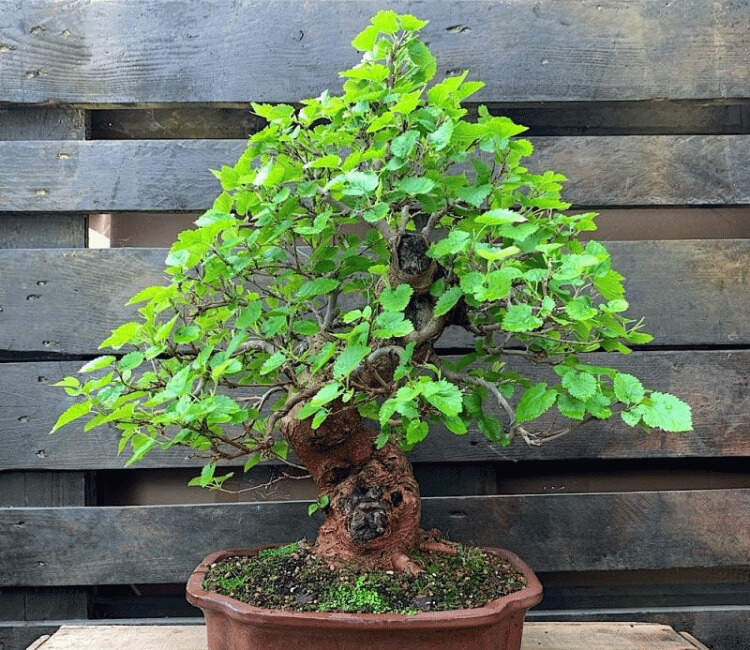
Transplanting should be done in early spring, just before the budding season. Do it approximately every 1 to 2 years, depending on your plant’s growth rate.
New plants usually grow faster.
During this process, you should remove rotten roots, unwanted branches, and some leaves.
If you heavily prune the roots, consider doing the same with the leaves and branches. Ideally, avoid drastic root pruning.
Using root stimulants with fungicides can increase your success rate during transplanting.
After transplanting, wait for your mulberry bonsai to start budding before applying new fertilization.
This way, you allow your plant to adapt to the new pot before receiving new nutrients.
Pruning
Pruning is an essential aspect of bonsai care.
When done correctly, it helps maintain the size and shape you desire for your tree.
The mulberry bonsai requires frequent pruning due to its leaves. However, remember to allow some leaves to grow, as this promotes fruit formation on your mulberry.
The best time to prune your mulberry is after flowering, when you should cut between 1/3 and 2/3 of the branch length.
Here’s a video that explains more about bonsai pruning:
Remember to use sterilized and sharp tools during this process. This prevents the onset of diseases that could harm your bonsai.
Common Questions:
Here are answers to some common questions that may arise during your cultivation:
What are the most common pests in this bonsai?
To identify the most common pests and diseases in mulberries, I recommend visiting this site: https://morningchores.com/mulberry-tree-pests-and-diseases/
When should wiring be done?
Some sources suggest between spring and summer, while others say during spring or autumn. Therefore, we recommend doing it during spring.
The video below will help you with this task:
How is the propagation of the mulberry bonsai done?
It can be done in three ways:
- Using seeds
- Using cuttings
- Through grafting
Conclusion
The mulberry bonsai is an excellent option, especially for beginner bonsai enthusiasts, and with the tips from this article, you’ll be able to cultivate it easily.
If you want to learn more about bonsais, check out the articles below:
- Pests and Diseases in Bonsais – How to Identify, Combat, and Prevent
- Bonsai Problems – Yellowing, Drying or Falling Leaves
- Orange Bonsai – How to Care Step by Step
Comment below on how your cultivation is going and what advice you would add to this article.
I’m looking forward to your feedback.

